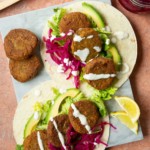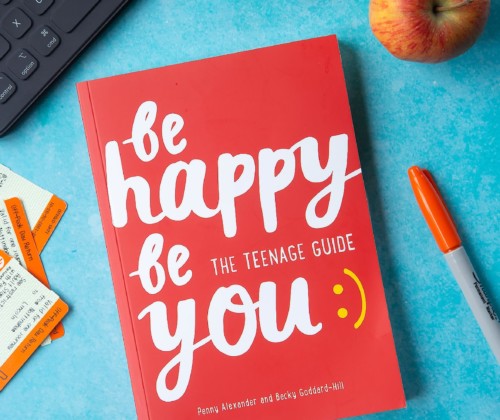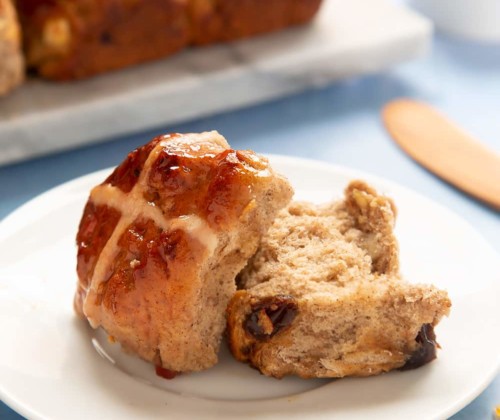Flavourful, soft, perfectly-textured falafel with a crisp outer, you’re going to love this vegetarian harissa falafel recipe!
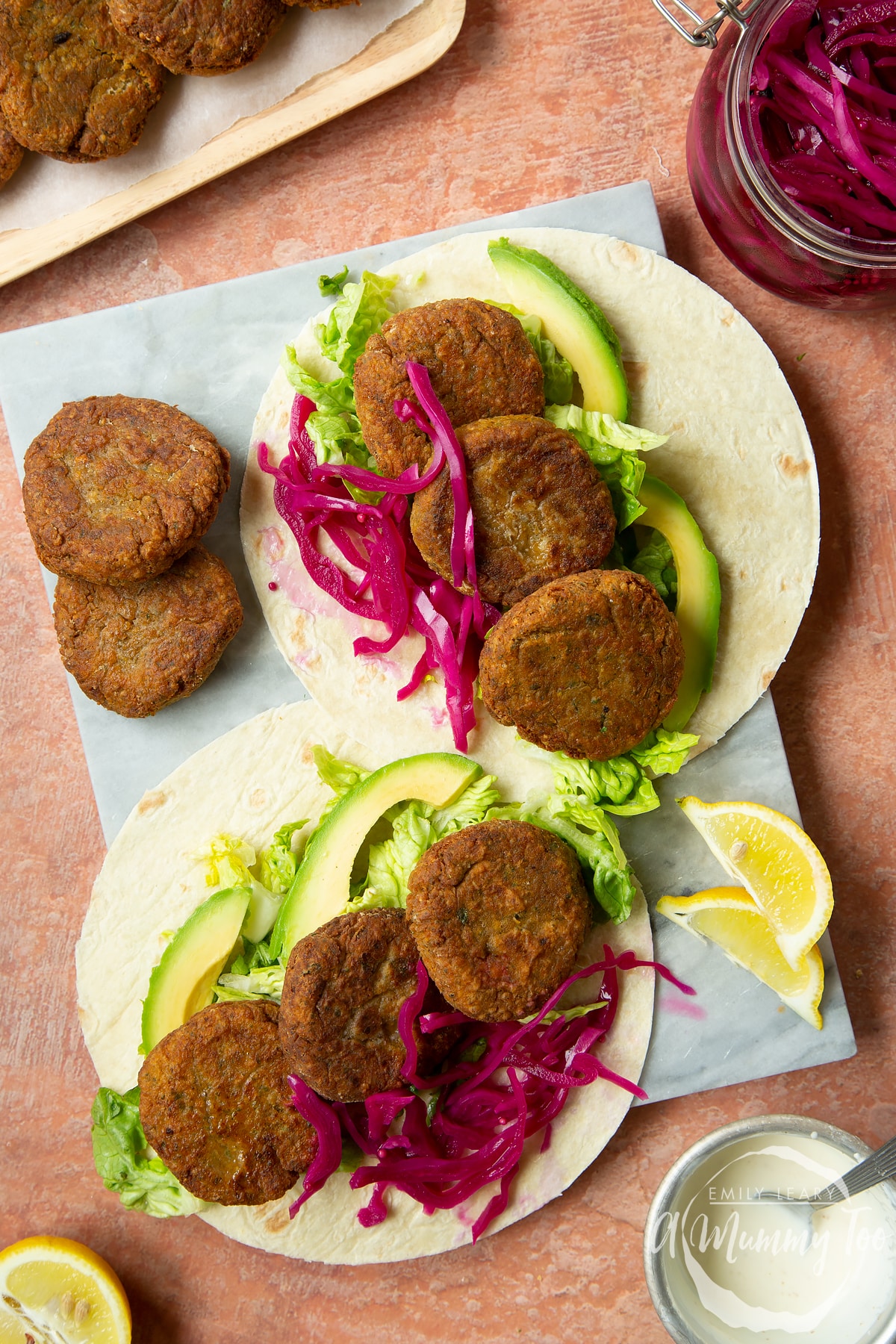
Not so long ago, vegetarian food was widely but unjustly considered boring and bland. Today, the world has largely woken up to the delicious variety that meat-free cooking can offer, and this vegan harissa falafel recipe ticks all the flavour boxes.
The recipe is from The Vegetarian Kitchen, a newly released cookbook from Prue Leith – the founder of Leiths School of Food and Wine, chef and Bake Off judge – and her niece Peta Leith, former pastry sous chef at the Ivy and lifelong vegetarian.
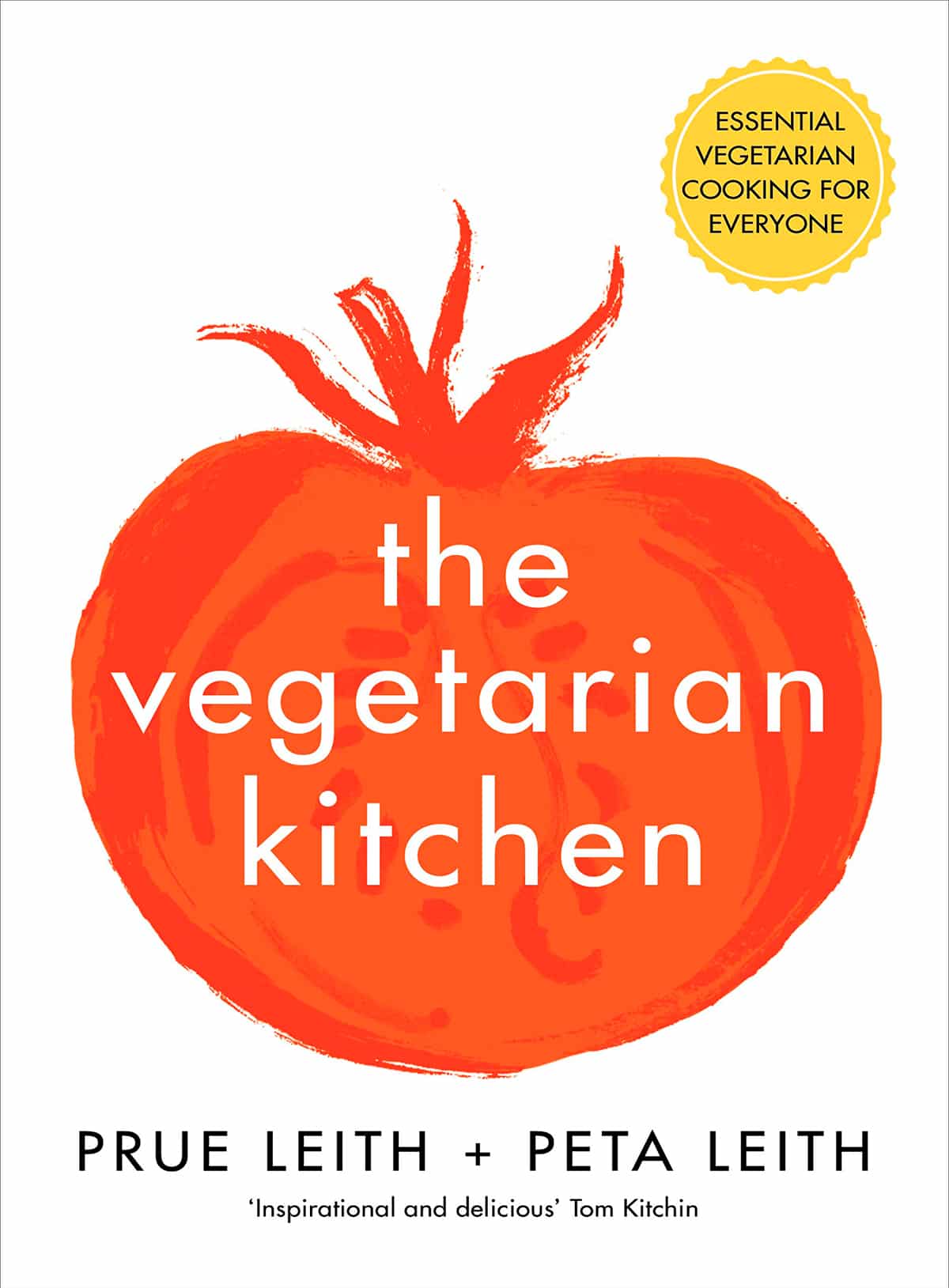
This gorgeous cookbook features simple, meat-free family dishes that bring delight to the extended Leith family table, time and time again. Recipes include Slow-Roasted Tomato and Goat’s Cheese Galette, Black Bean Chilli with Lime Salsa, Blackberry and Lemon Pavlova and Stone Fruit Streusel Cake.
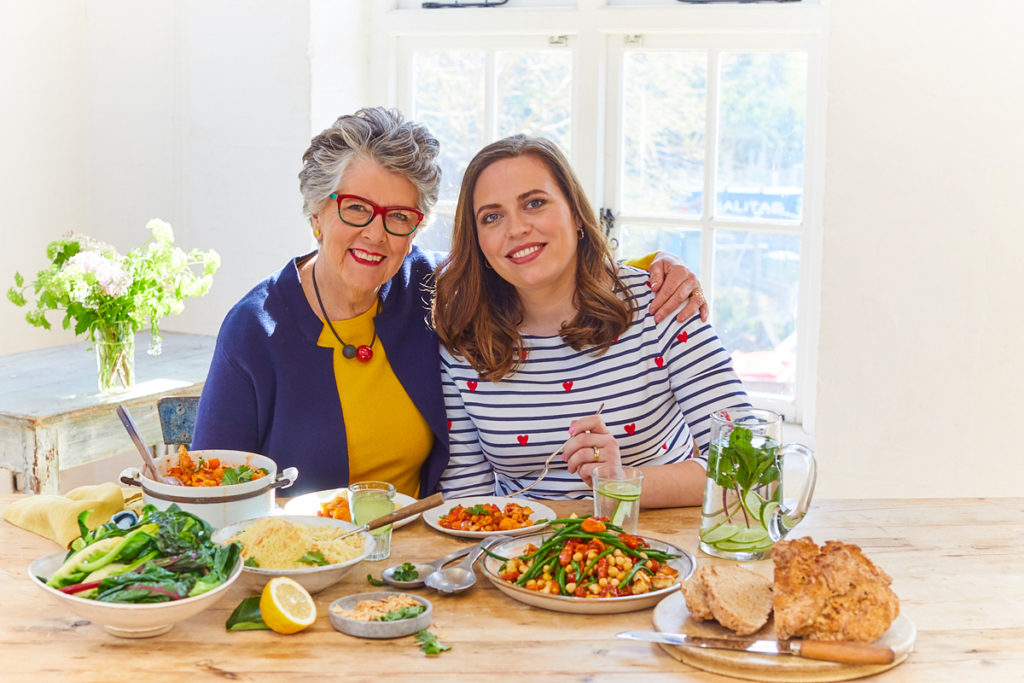
Prue and Peta say:
Our style of vegetarian cooking is simple, rustic and flavoursome. We’re not interested in foams and gels and edible flowers on every mouthful. Of course that style of cuisine has its place, but food is about nourishment, comfort and enjoyment. We use really good-quality, seasonal ingredients, and do only what’s necessary to them in order to make them taste fantastic. Vegetarian and vegan food should not be about compromising or missing out on anything; a really well-devised and wellexecuted plant-based meal should be just as delicious (if not more so!) than any unrestricted meal.
I’ve so enjoyed flicking through The Vegetarian Kitchen and discovering new ideas. The first to catch my eye was this harissa falafel wrap, which is super easy to make and produces an extremely pleasing lunch to rival my favourite local North African restaurant.
Peta says:
Prue claims never to have met a falafel she liked, so I’m really hoping I can change her mind with this one! This is a wrap even non-vegans can enjoy without feeling as though anything is missing – the falafels are packed full of flavour, and the pickled cabbage perfectly complements them. I never used to be a fan of pickles, and I still run a mile from a gherkin, so if you are like me, please give this pickle a chance; the cabbage is crunchy and zingy and nothing like the floppy grey-green things you find on a burger!
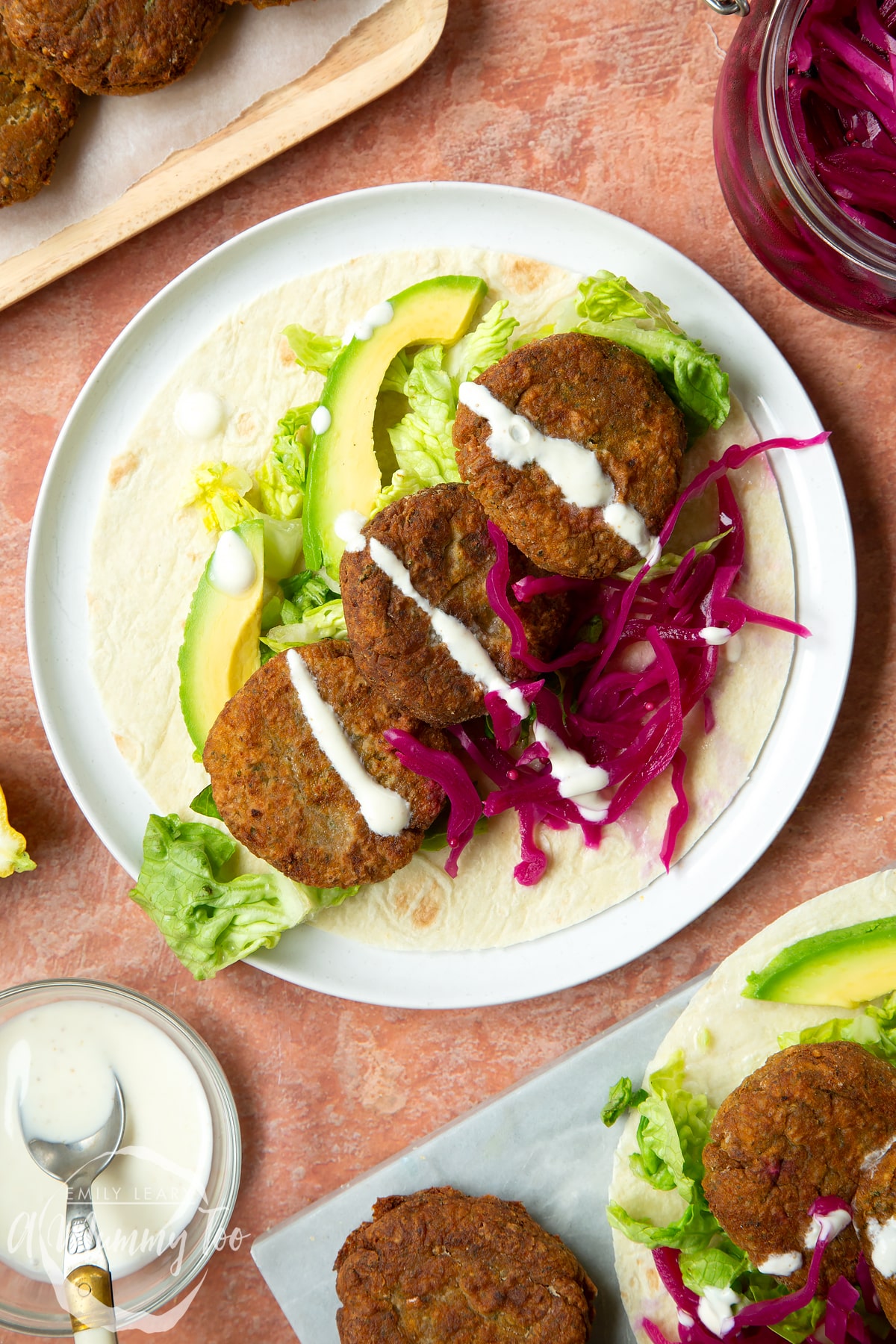
Ingredients
For the quick-pickled cabbage
- 125 ml (4.2 floz) apple cider vinegar
- 1 tbsp caster sugar
- 1 tsp salt
- 1 tsp yellow mustard seeds
- 1/2 black peppercorns
- 1 shallot thinly sliced
- 200 g (7.1 oz) red cabbage thickly sliced
For the falafel
- 50 g (1.8 oz) quinoa dry weight
- 240 g (8.5 oz) tinned chickpeas drained
- 1 tbsp harissa paste
- 2 garlic cloves roughly chopped
- 1/2 tsp ground coriander
- 1/2 tsp ground cumin
- 1 1/2 tbsp plain flour plus extra for coating
- 1/2 tsp baking powder
- 1 small onion roughly chopped
- 1 handful flat-leaf parsley stems removed
- 1 handful fresh coriander stems removed
- 5 tbsp vegetable oil for frying
- pinch salt and pepper to season
For the tahini dressing
- 2 tbsp tahini
- 2 tsp lemon juice
- 1/2 tsp white wine vinegar
For the wraps
- 4 soft tortilla wraps
- 2 baby gem lettuces washed and chopped
- 1 avocado halved, stoned, peeled and sliced
Equipment
-
Preserving jar
-
Small plate
Instructions
Make the quick-pickled cabbage
First, make the pickling liquor for the cabbage. Combine the apple cider vinegar, sugar, salt, mustard seeds and peppercorns in a small saucepan.

Add 125ml water and bring to the boil. Remove from the heat as soon as it boils.
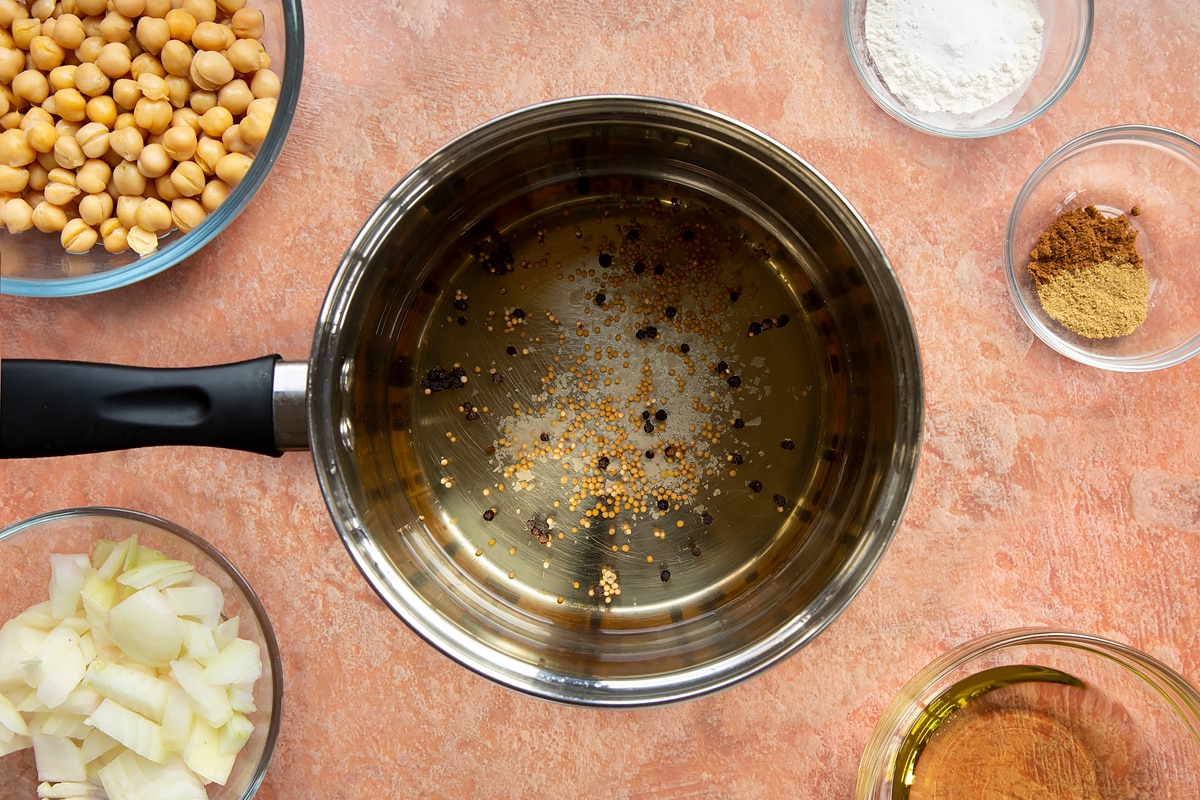
Put the shallots into a clean, heatproof jar.
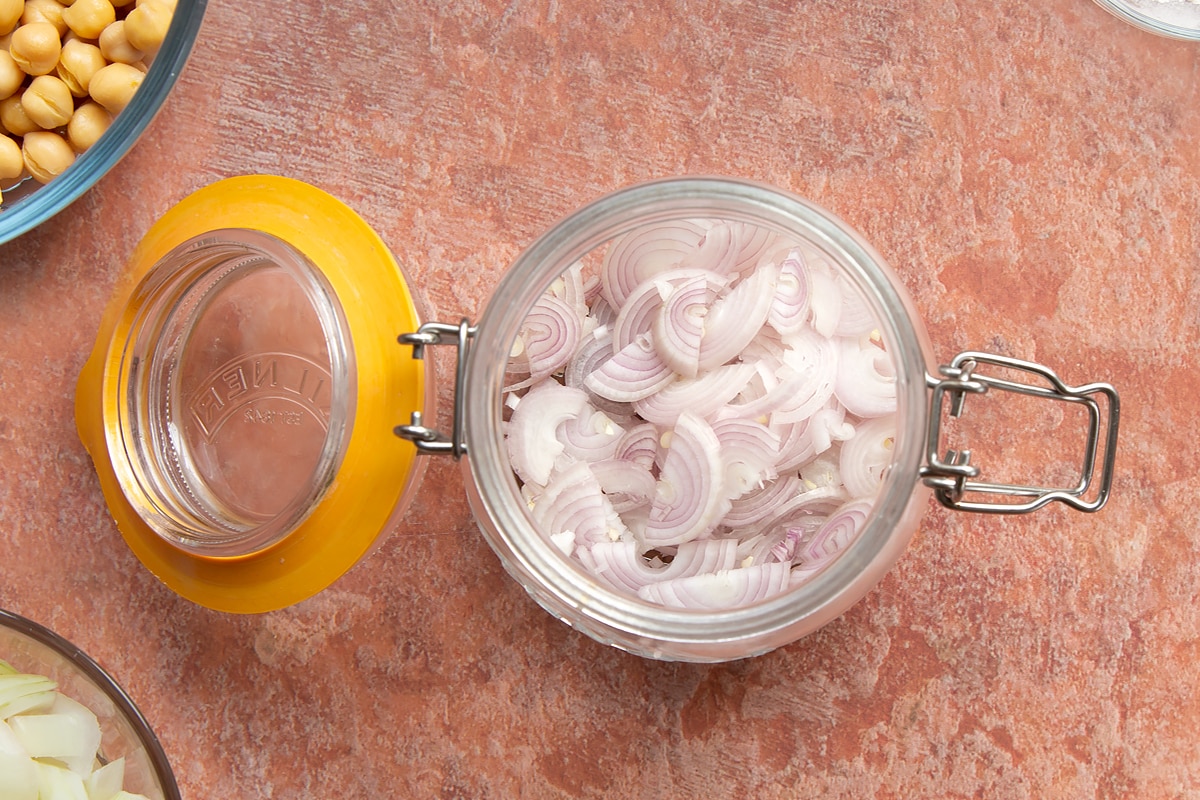
Add the cabbage.
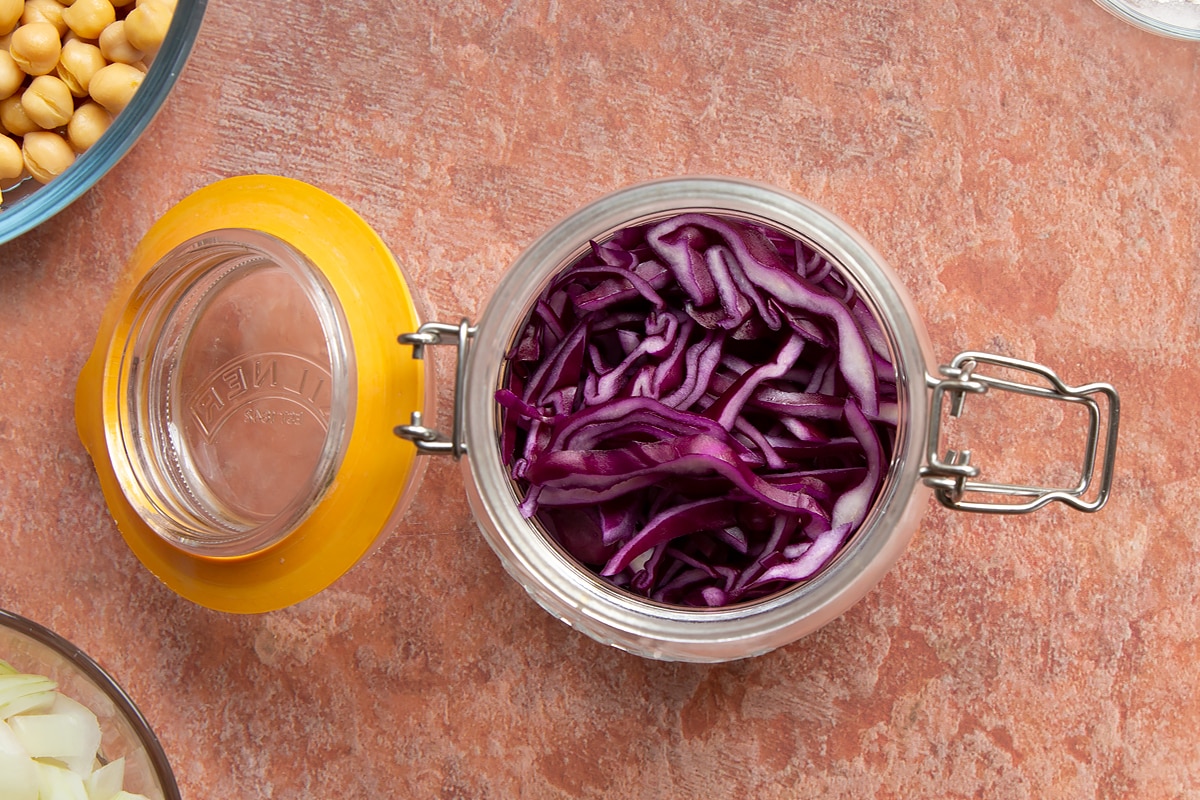
Pour the hot pickling liquor over it and press the cabbage down to ensure it’s all submerged. Leave it to cool, then seal with a lid and refrigerate it for at least a few hours, ideally overnight. The pickled cabbage will keep for up to 10 days covered in the fridge.
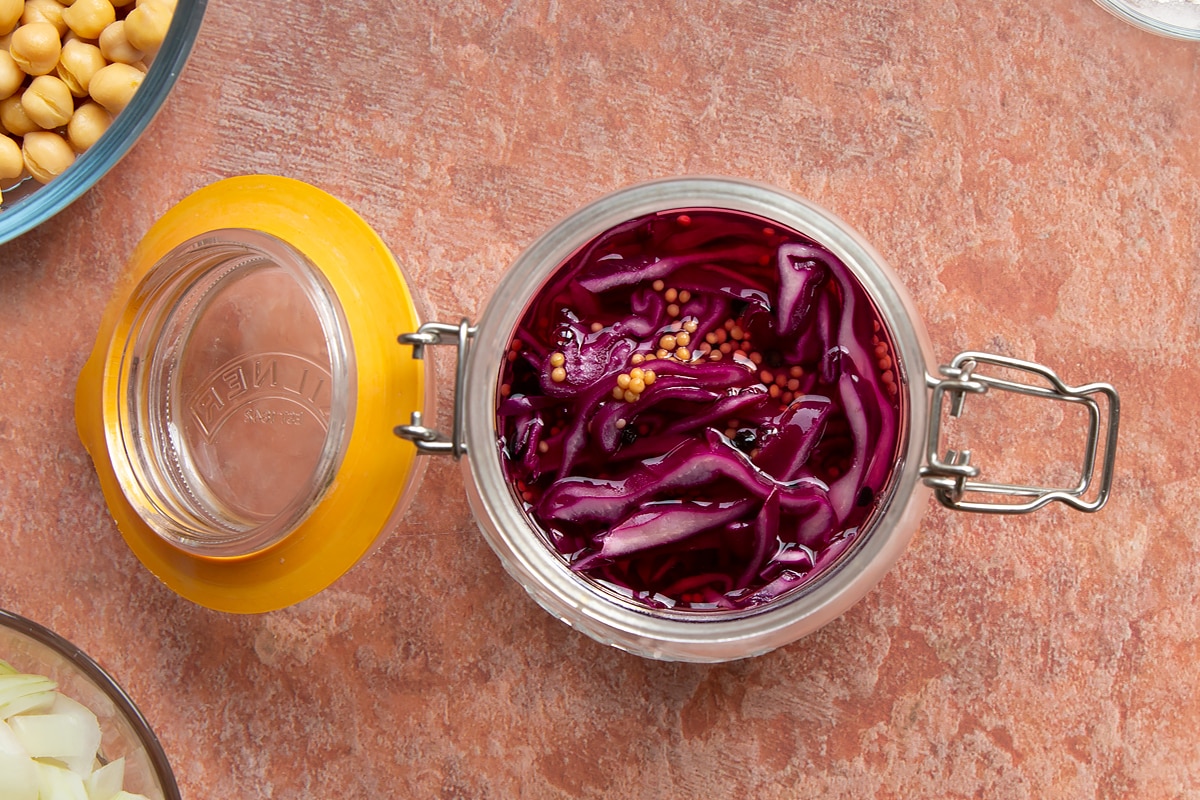
Make the falafel
Cook the quinoa in a large pan of boiling water for 10 minutes or until the quinoa is tender. Drain and allow it to cool.
Put the chickpeas and onion in a food processor.
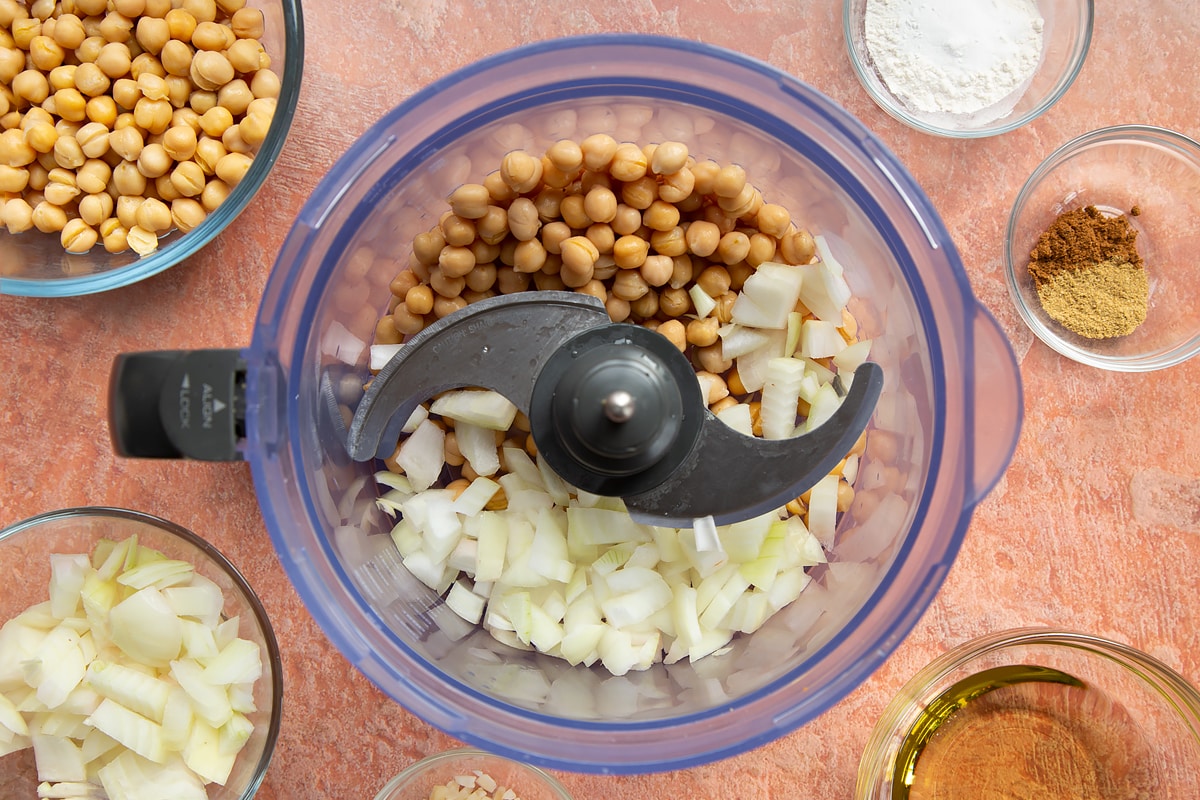
Add the garlic.
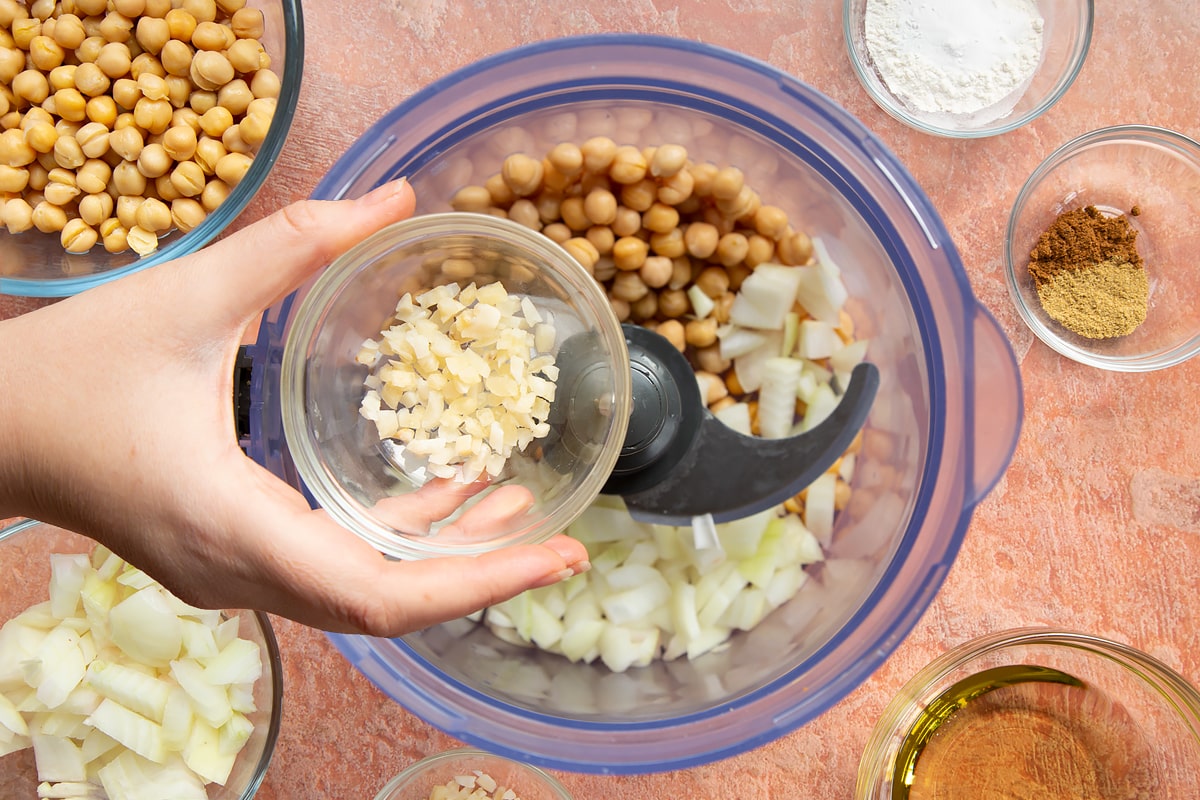
Add the ground cumin and coriander.
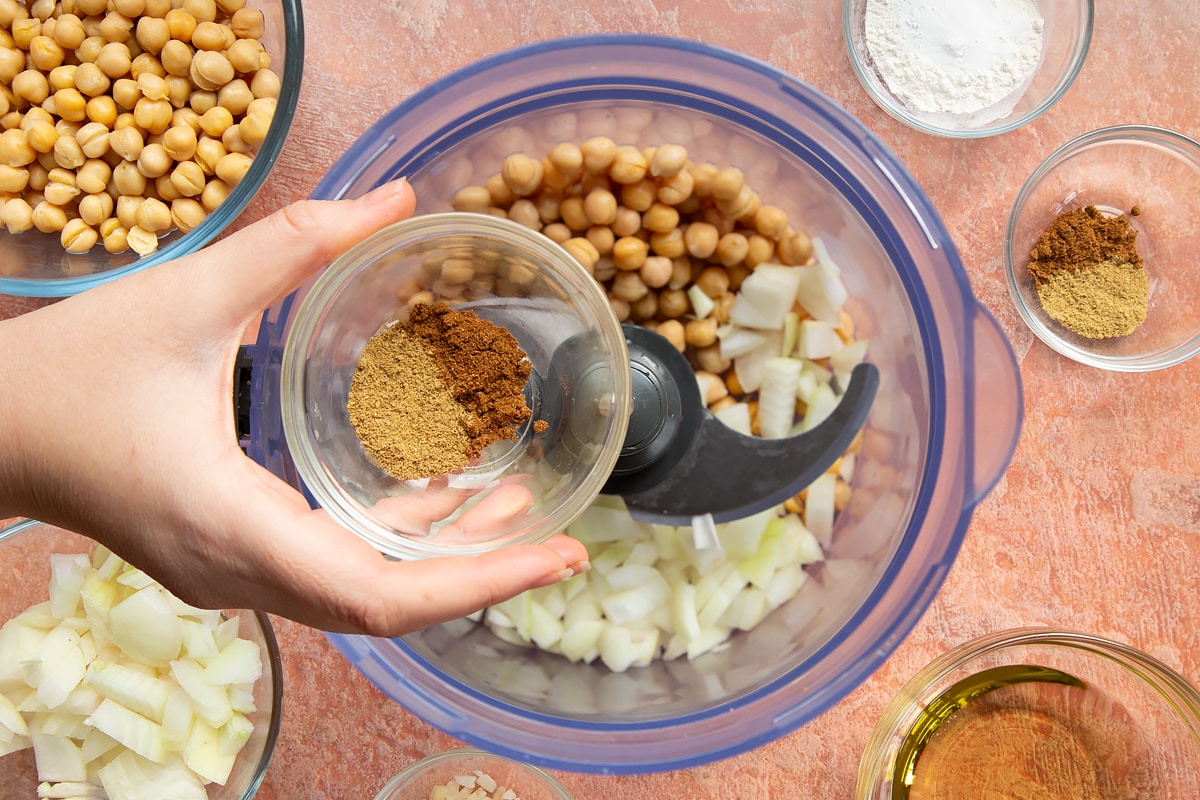
Add the baking powder and flour.
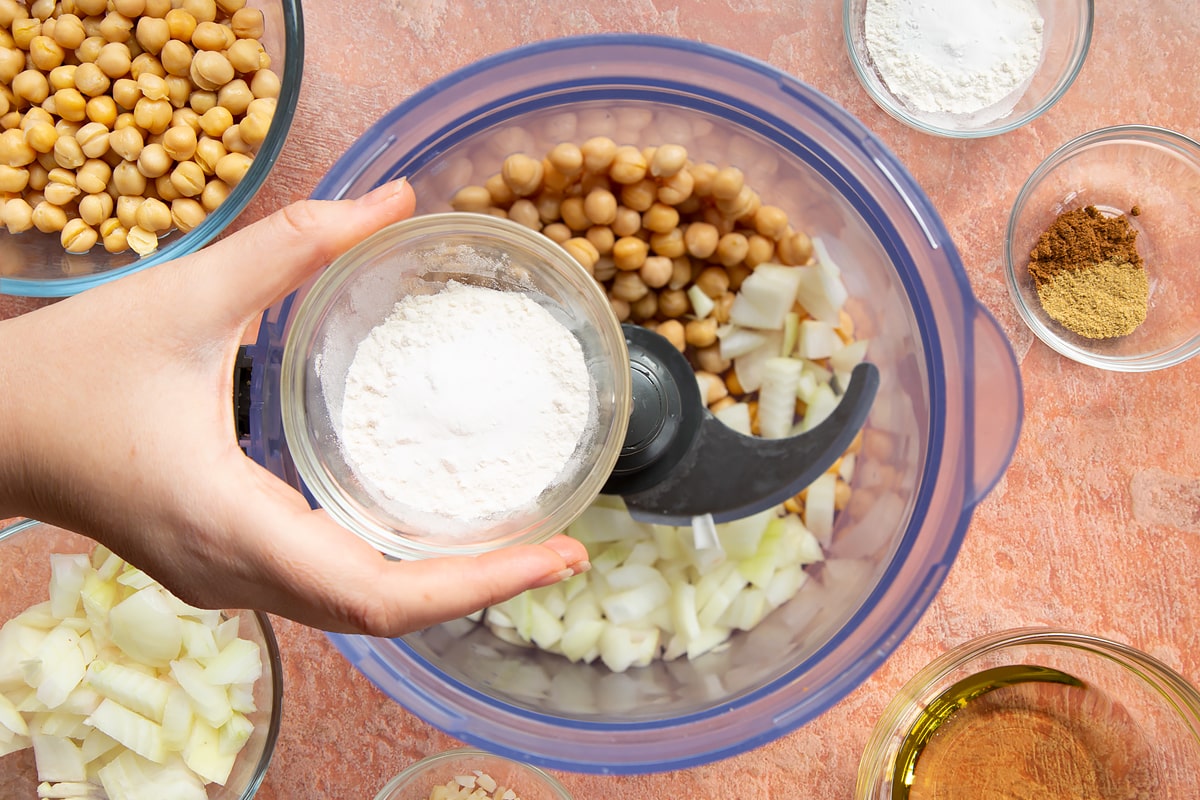
Add the harissa.
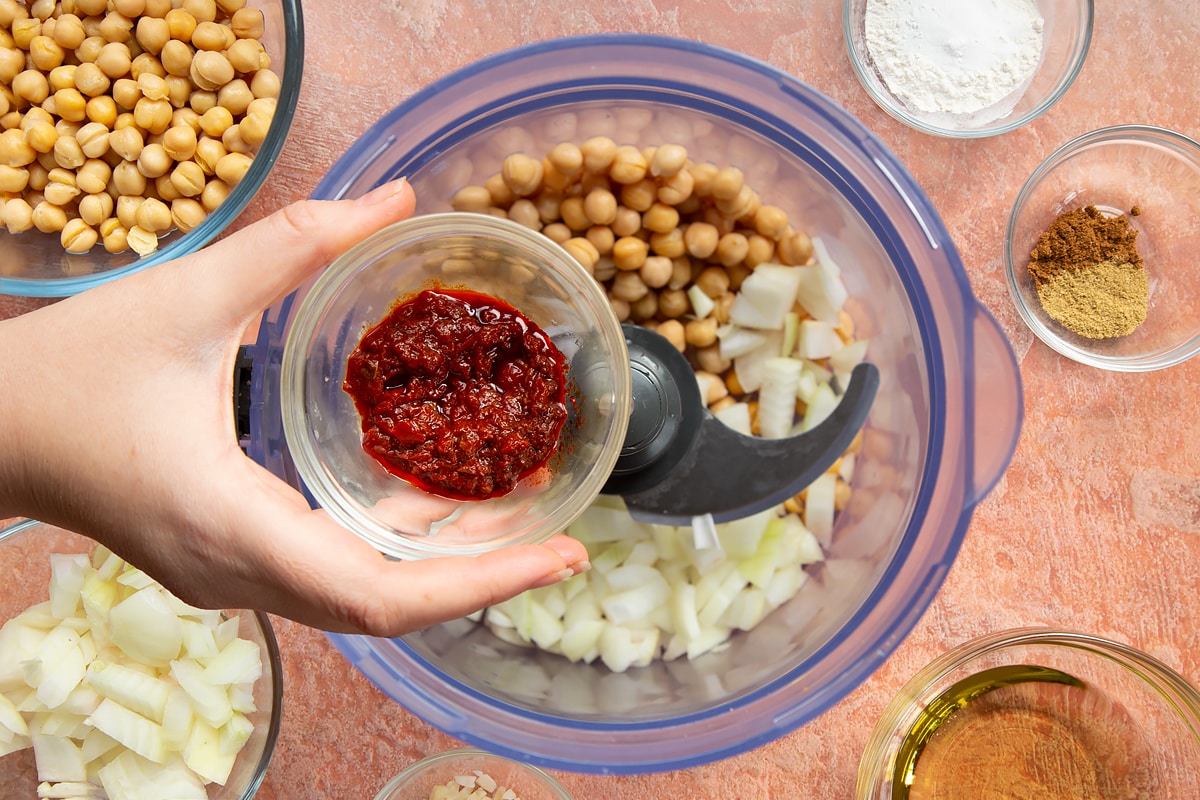
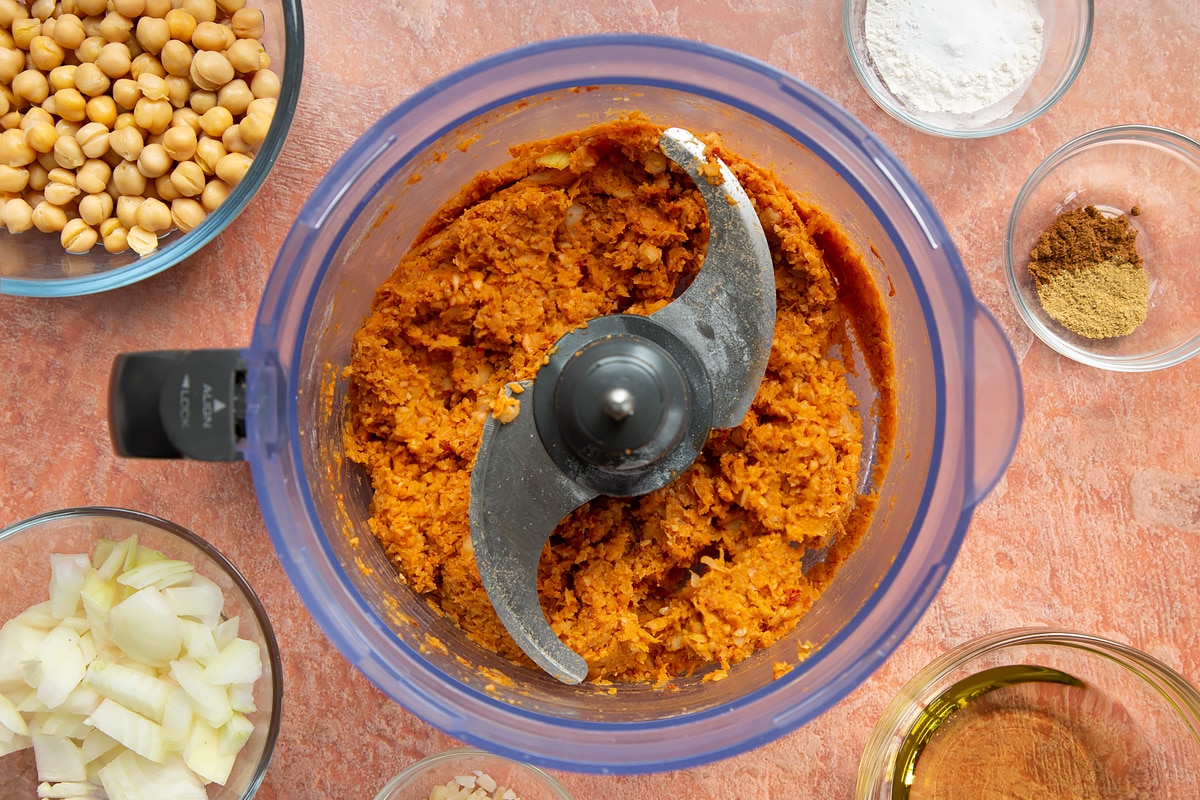
Add the fresh coriander and parsley.

Blitz until smooth, adding a tablespoon of warm water if it is dry and crumbly. Keep adding warm water, a tablespoon at a time, blitzing between additions, until you have a paste that will hold together (you may need up to 6 tablespoons). (Editor’s note: I didn’t need to add any water at all.)

Transfer the mixture to a bowl, then add in the quinoa.
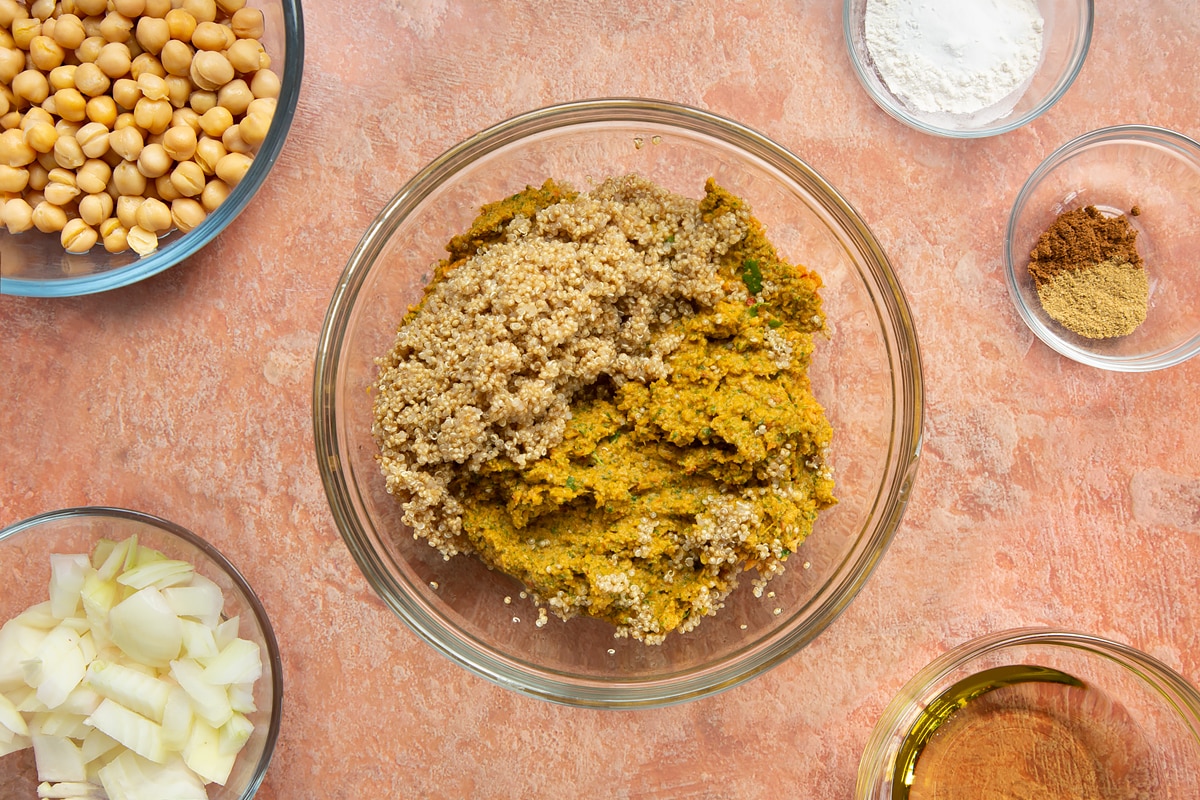
Stir in. Season to taste with salt and pepper.
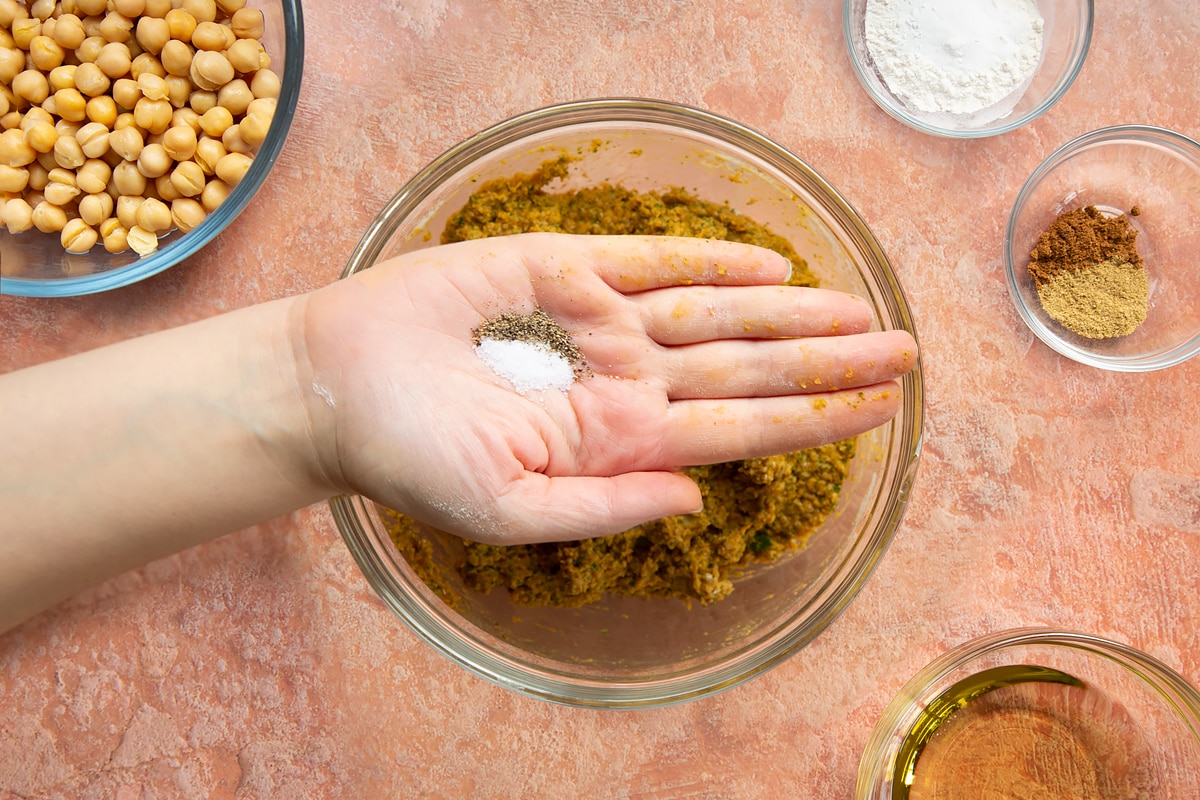
Chill in the fridge for at least 1 hour.
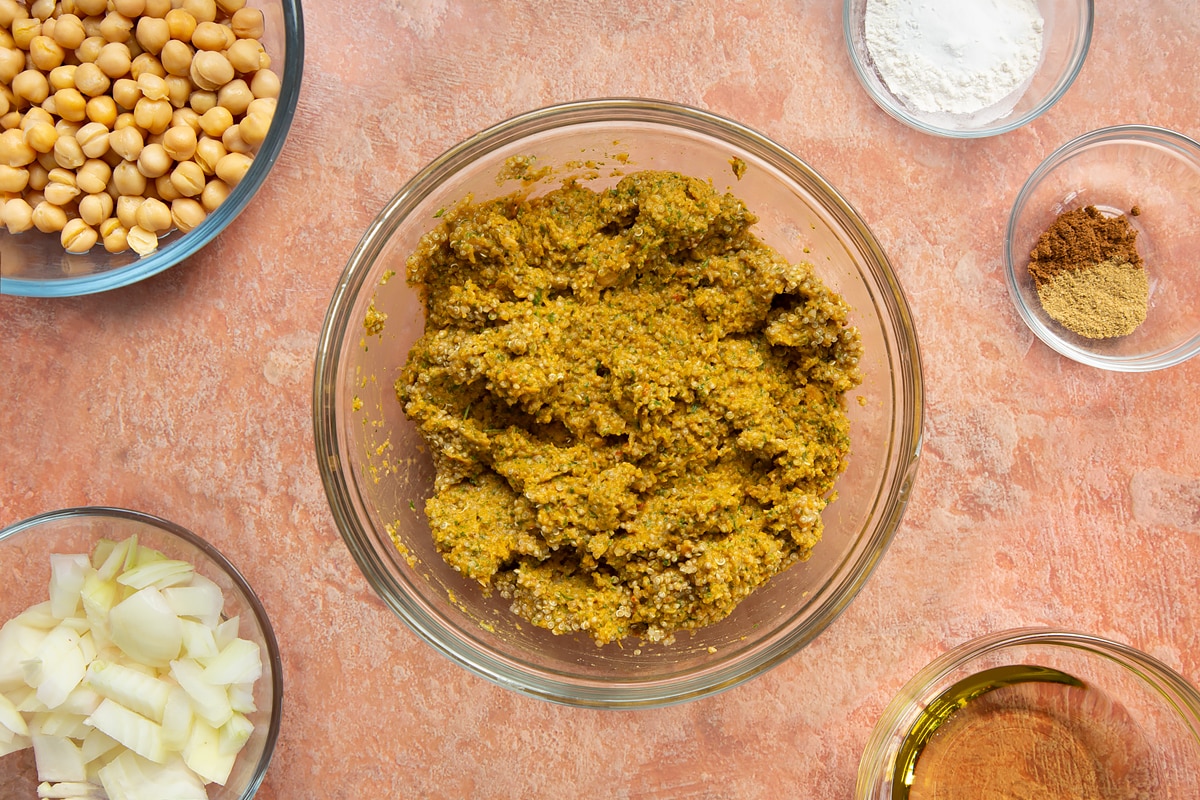
Using clean hands, take egg-sized lumps of the falafel mixture into your hands and shape them into patties (the mixture should make around twelve).
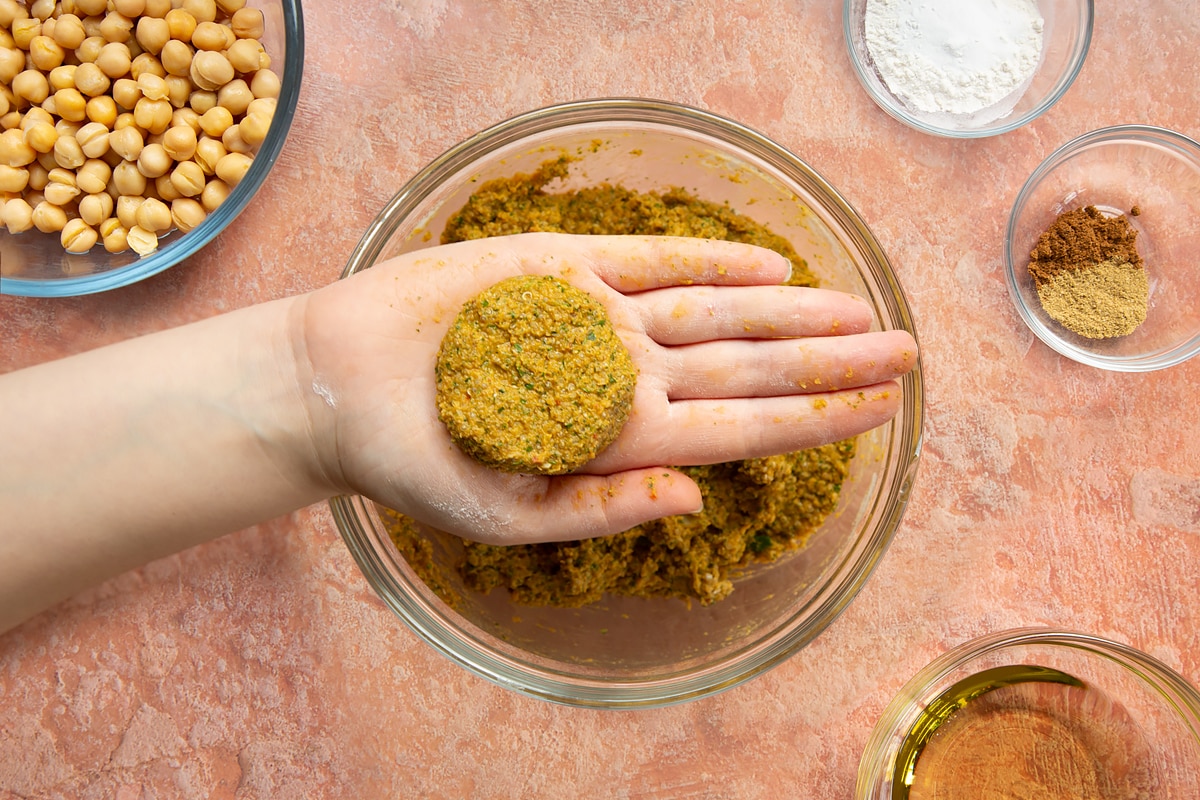
Press them together, then roll them gently in flour – they will be fragile, so handle them with care.
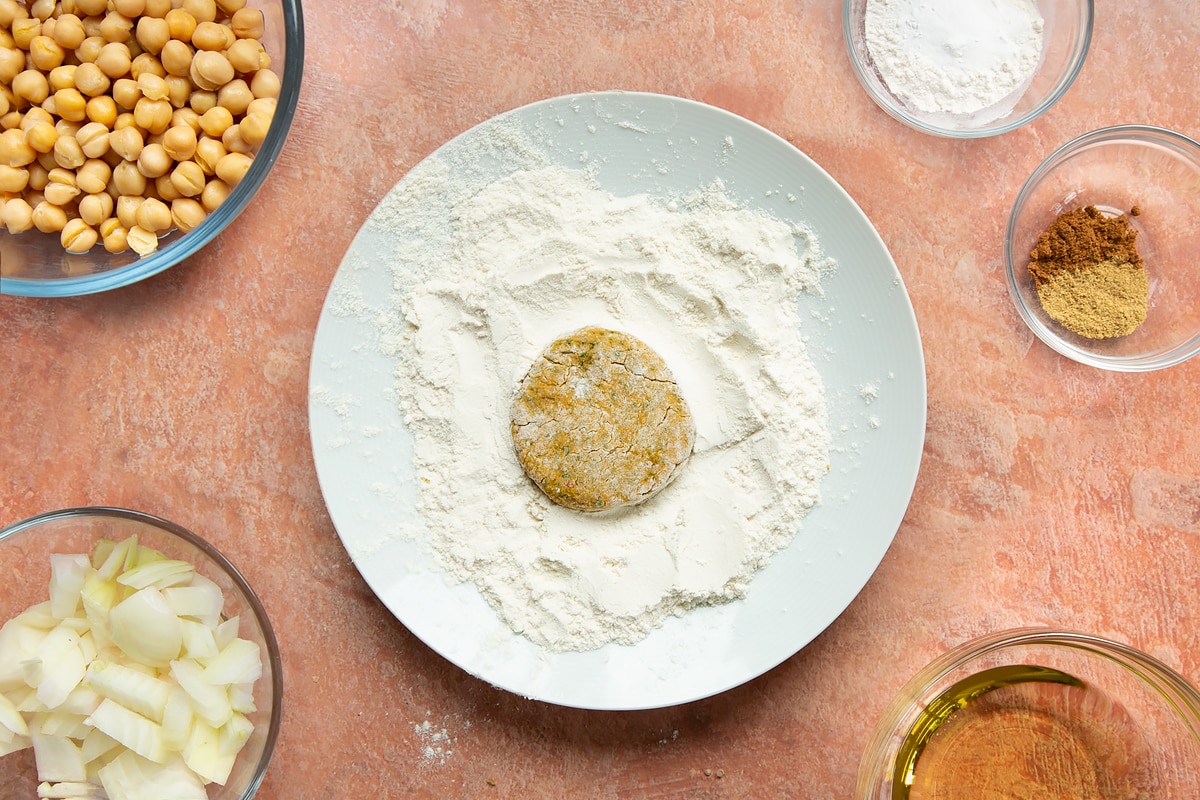
Heat the vegetable oil in a heavy-based frying pan over a medium-high heat, then fry the falafels, carefully flipping them over halfway through cooking, until they are golden brown on both sides.
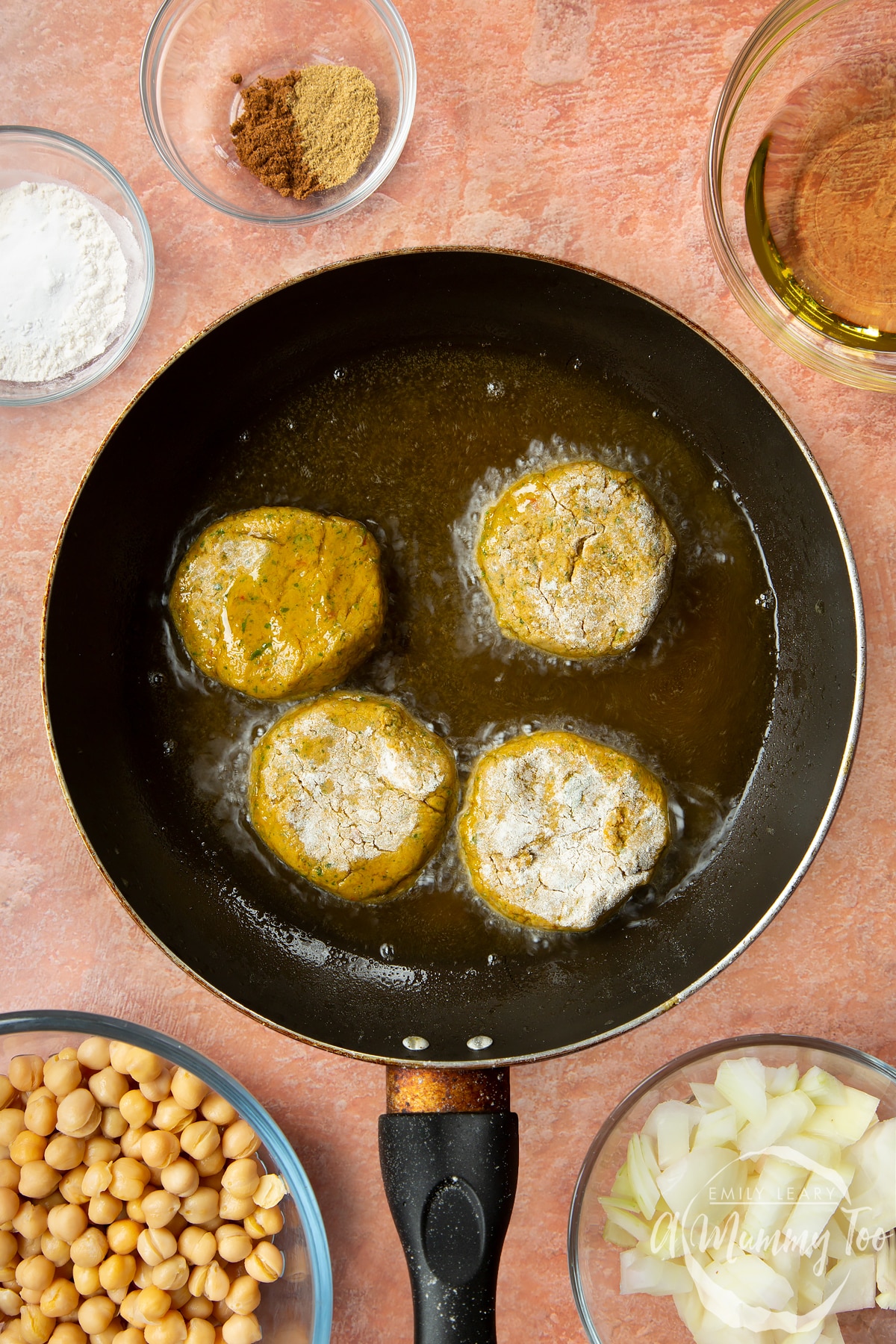
Transfer to a plate lined with kitchen paper to soak up any excess oil.
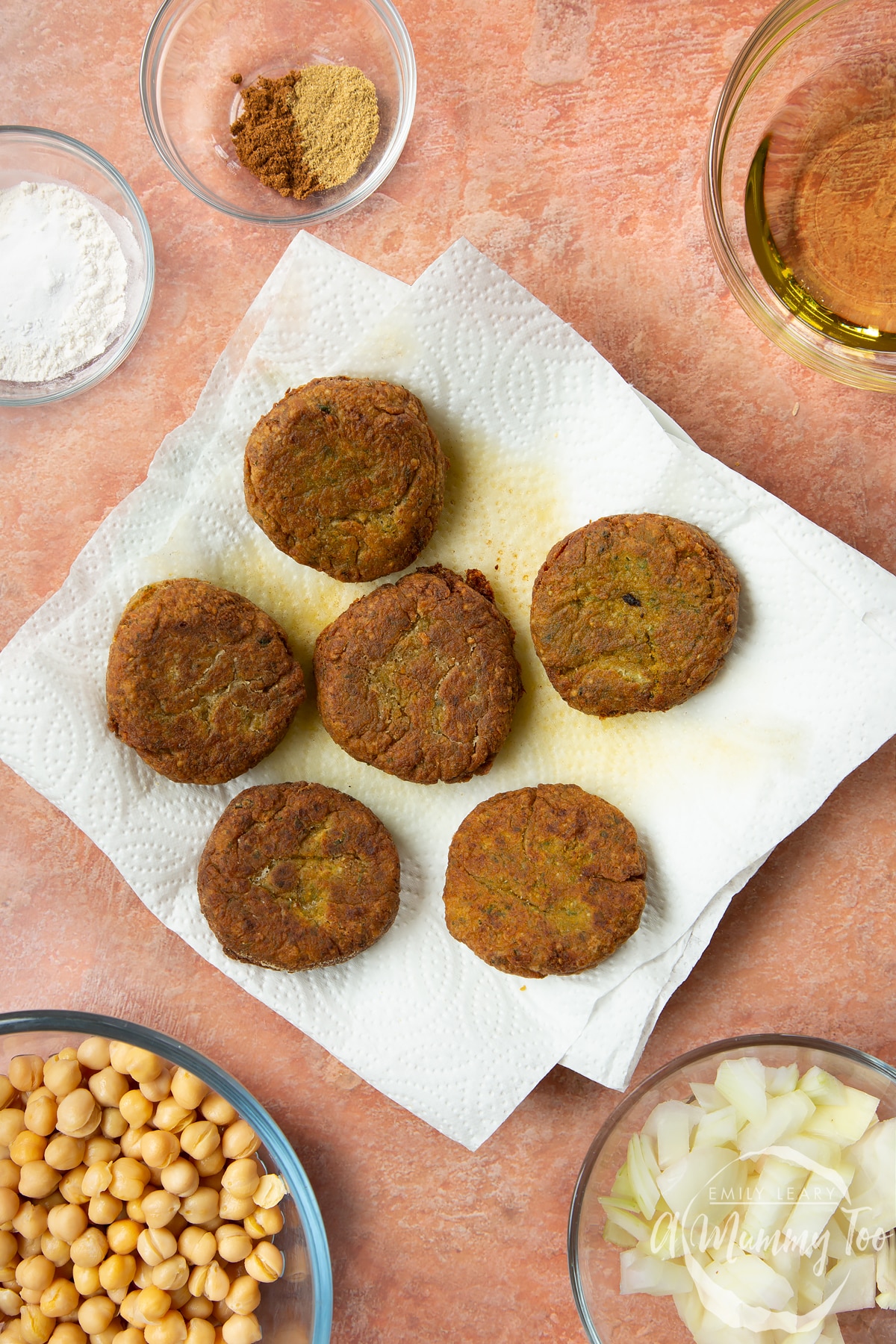
Make the tahini dressing
Combine all the ingredients with 3 tablespoons of warm water in a small bowl and whisk until smooth. Season to taste.
Assemble the wraps
Spread a generous spoonful of the tahini dressing on each wrap, then divide the lettuce, avocado and falafels between them. Add some pickled cabbage to each, then drizzle over a little extra tahini dressing. Wrap them up tightly and serve immediately.
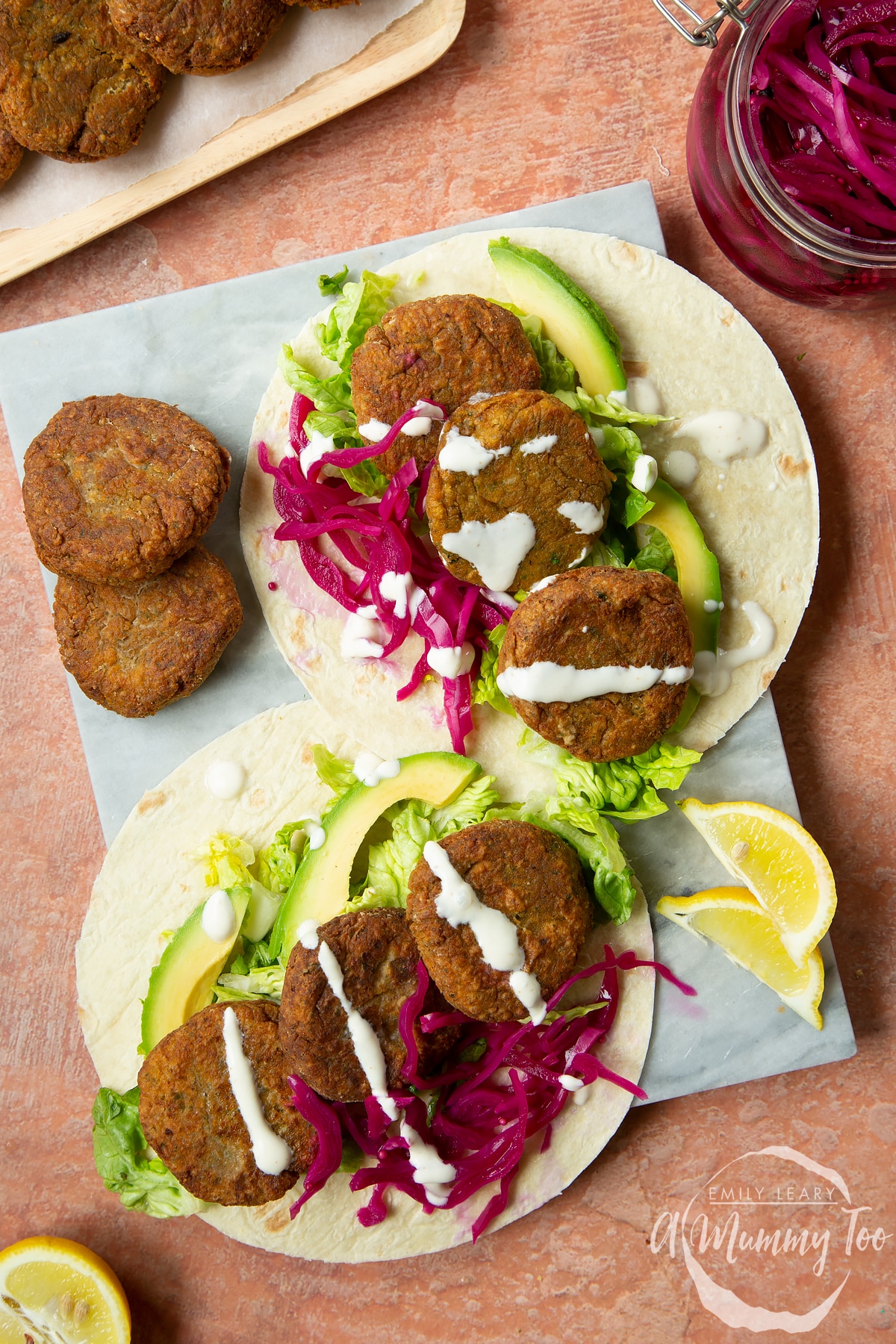
Isn’t it gorgeous? Do order your copy of The Vegetarian Kitchen – it’s a fabulous cookbook for vegetarians and meat-eaters alike.
Recipe from The Vegetarian Kitchen. Recipe text, headshot and cover image produced with permission from the publisher, Bluebird Books. Headshot of Prue and Peta by David Loftus.
Pointers, tricks and troubleshooting tips for the perfect harissa falafel
Is harissa falafel easy to make?
This harissa falafel recipe is nice and easy to make, especially as it uses canned rather than dried chickpeas. The mixture is quick to whizz up in the food processor, and you’ll just need a few minutes of patience to shape the falafel.
The flat shape means the falafel can be easily fried in a frying pan too, so no big pans full of hot oil and it’s easy to make sure they’re properly cooked through.
Will I need any special equipment to make harissa falafel?
This is a very simple recipe to make, so the only special equipment you’ll need is a food processor. Everything else should be easy to find any standard kitchen.
If you’re making the quick-pickled cabbage, you’ll need a jar to preserve in, but it needn’t be a fancy Kilner one. An empty jar from the supermarket, washed and sterilised, will work just as well.
Where can I buy quinoa?
You should be able to find quinoa in most supermarkets, many health food shops, as well as online. In supermarkets, you may find it with the grains, or it may be found in the gluten-free or “free-from” section.
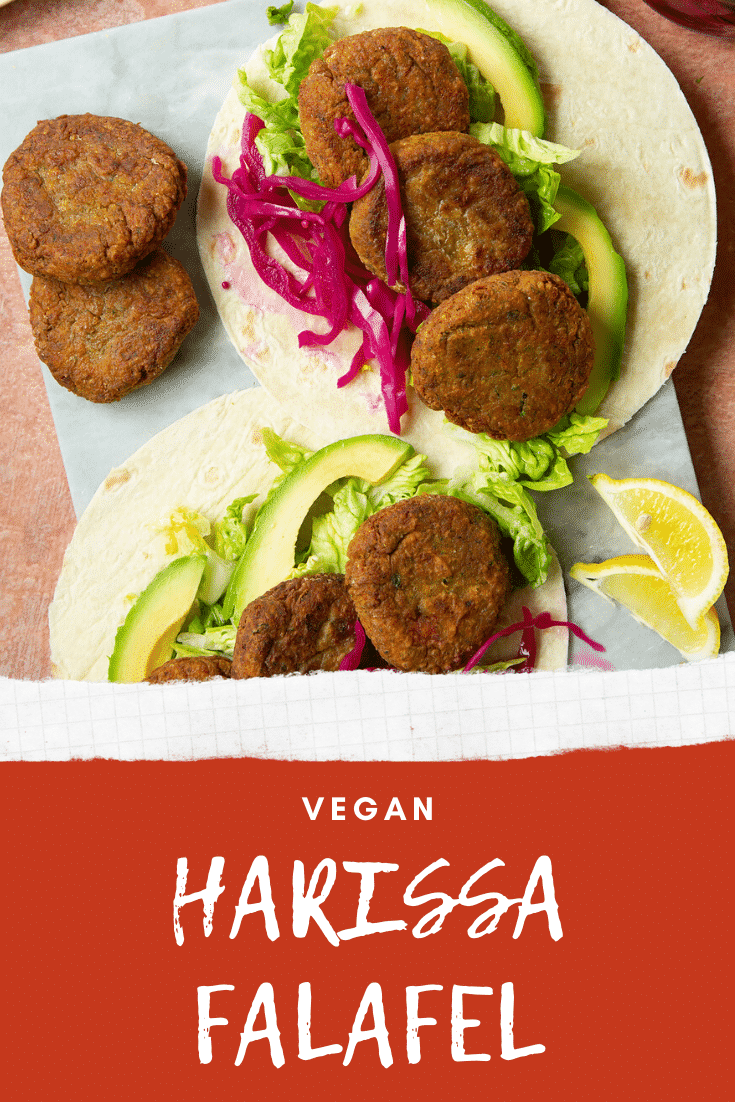
Are these harissa falafel suitable for vegetarians? What about vegans?
Yes! Falafel is often seen as something of a prized food among vegans, and these harissa-flavoured ones are no exception, since all the ingredients are completely free of animal products.
Is harissa falafel a keto-friendly recipe?
With chickpeas, quinoa, flour and tortillas, this recipe is not keto-friendly as-is. However, it’s high protein and full of fibre, so I think it’s a healthy meal.
However, if you’re intent of a very low carb version of this meal, the flavours are amazing, so you could try forgoing those ingredients and add what’s left to a pan of scrambled eggs. You would end up with something different, definitely not falafel, but still very tasty and much lower in carbs.
Are these harissa falafel healthy?
With plenty of vegetables, plants and legumes making up a high protein and fibre content, these falafel wraps are nutritionally quite dense without being too heavy in calories, so will work fantastically as part of a healthy, balanced lifestyle.
Is harissa falafel safe to eat while pregnant?
Cooked correctly and using properly handled ingredients, this harissa falafel recipe is perfectly safe to eat while pregnant, unless you have been advised otherwise by your health professional.
You can read more about the current NHS guidelines on foods to avoid during pregnancy here. And you should always check with a health professional regarding anything you are unsure of.
Take particular care to practice proper food hygiene when it comes to the pickled veg. Always use a clean, heatproof preserving jar and a clean utensil to get the veg out of the jar to avoid contamination.
You can sterilise your jar by washing it and its lid thoroughly in hot soapy water. Next, pop the jar it in a 160C oven for 10 minutes. Meanwhile, boil the lid in a pan of water on the stove for 5 minutes.
What goes well with harissa falafel?
One of the best things about falafel wraps is how many flavours, both subtle and strong, combine into something delicious.
For this particular wrap, you already have the fantastic zingy pickled cabbage, crunchy lettuce, creamy avocado and earthy tahini dressing to add plenty of flavour and texture, but if you want more, I would recommend experimenting with adding other dips such as hummus, baba ghanoush or mango chutney.
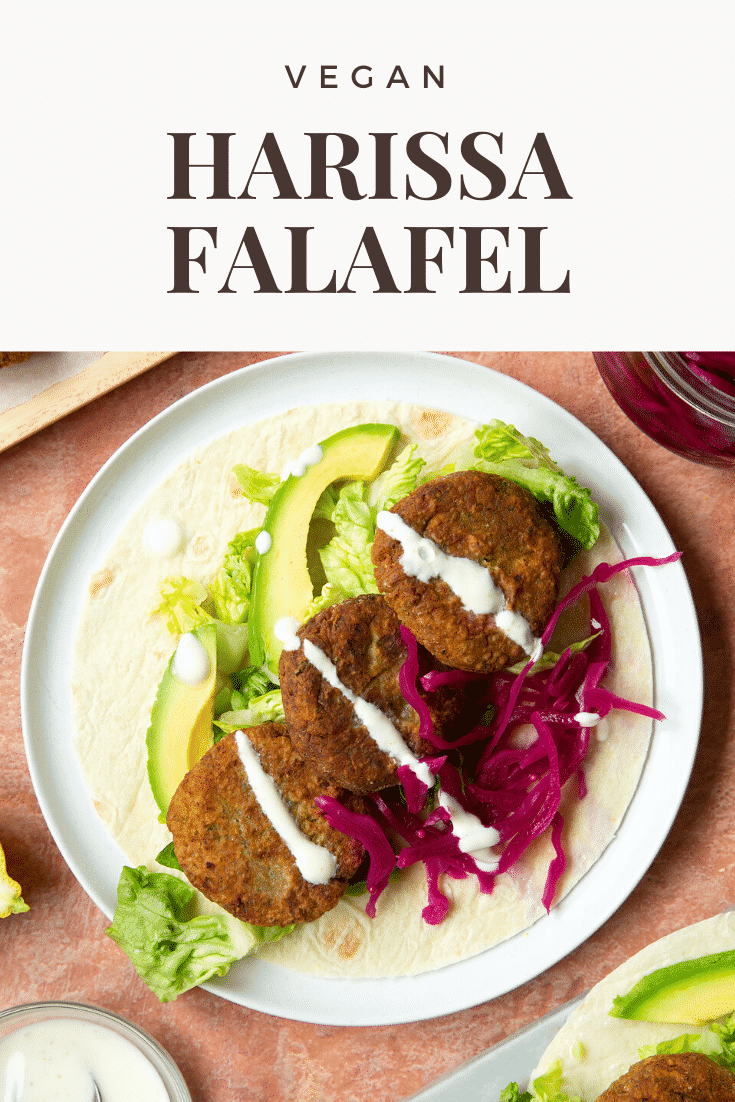
I haven’t got some of the herbs or spices, can I get away with not adding them?
If you don’t have one of the herbs or spices to hand then you can probably get away with just not including it, but you will notice that your dish doesn’t end up with quite the same flavour as this falafel should have.
If you’re short of ground coriander and/or cumin, you could try using an equivalent amount of just one or the other, or replacing entirely with curry powder. You won’t get exactly the same flavour, but it should still be tasty.
Can I add extra spice to this recipe?
While I found this recipe is the perfect balance of herbs and spices, if you love heat then you may wish to add more harissa for an extra spicy kick.
Just be aware that adding extra harissa will add more moisture to your mix, so you need to take care to stop before the mix becomes too loose.
How should I store harissa fafafel? How long does this recipe keep? Can I leave this recipe out on the counter?
A fully made wrap is best eaten immediately, but if you have one leftover, I would recommend wrapping it tightly in tinfoil and getting it into the fridge as soon as you have made it. It should keep well enough to enjoy the next day but won’t be quite as wonderful as when eaten fresh.
Ideally, if you have any leftover falafel it’s best to keep it separate after cooking rather than making them up into a wrap. Store the falafel in an airtight container within two hours of making them and then place them in the fridge where they will last for up to 3 days.
The benefit of doing this is that you can make a delicious, fresh wrap whenever you want in just minutes, especially as the pickled veg lasts for up to 10 days.
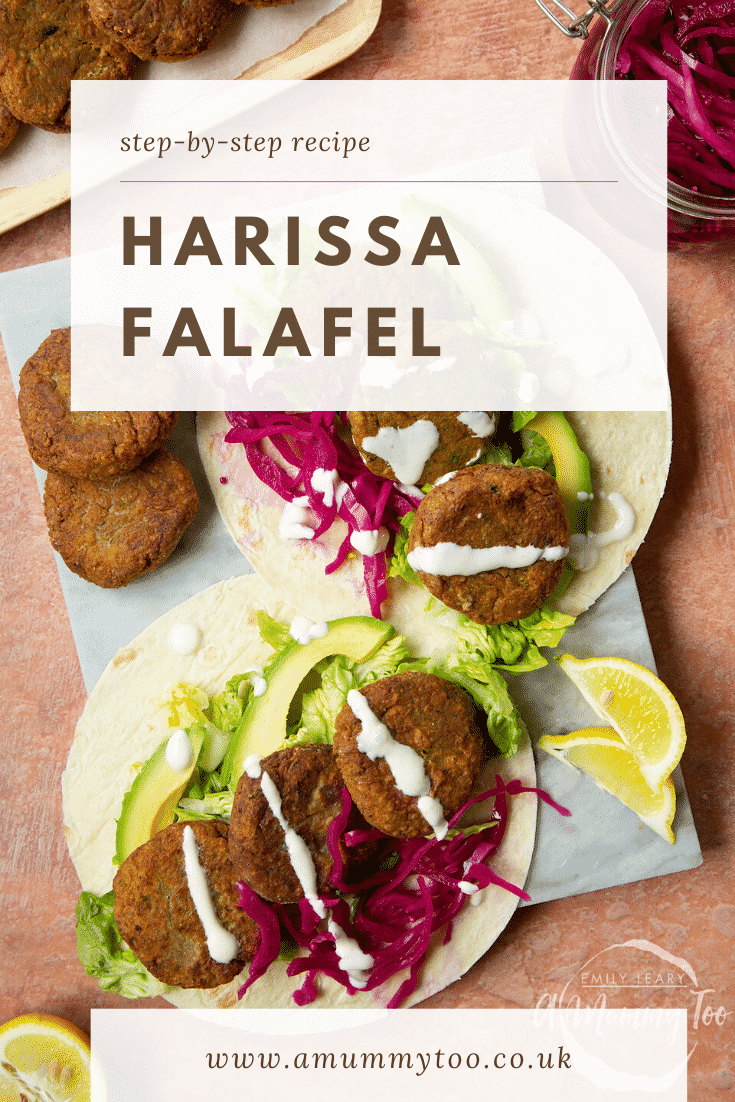
Can I freeze harissa falafel?
Yes! I have tried freezing and reheating the individual falafels and it retains the flavour well. However, I wouldn’t recommend freezing the entire wraps as salad items do not freeze well.
To freeze the individual falafel, cool them down and place them in an airtight container in the freezer within 2 hours of making them. Make sure to put baking paper between each layer so you can easily separate them when it comes time to take them out, otherwise you may well find they stick together.
You can then either defrost your harissa falafel in the fridge overnight before placing them on a baking sheet in a 180C oven to warm them through, or you can go direct from freezer to the oven too.
What is the best way to reheat this recipe?
Whether you are taking them out of the fridge or freezer place them in a 180C oven until warmed through.
You can microwave harissa falafel direct from the fridge or freezer, but they will lose their crispy outer and become quite soft, so it’s not the ideal method.
Whichever reheating method you choose, always make sure that your falafel are piping hot all the way through to the centre.
Can I make this recipe in a different quantity?
This recipe makes the perfect quantity of harissa falafel for four deliciously satisfying wraps and it is perfect for using up one standard size can of chickpeas with no annoying leftovers.
However, if you want to make a different quantity, you can change it to suit your needs. Just use the handy slider found in the recipe card on this page to automatically adjust the quantities.
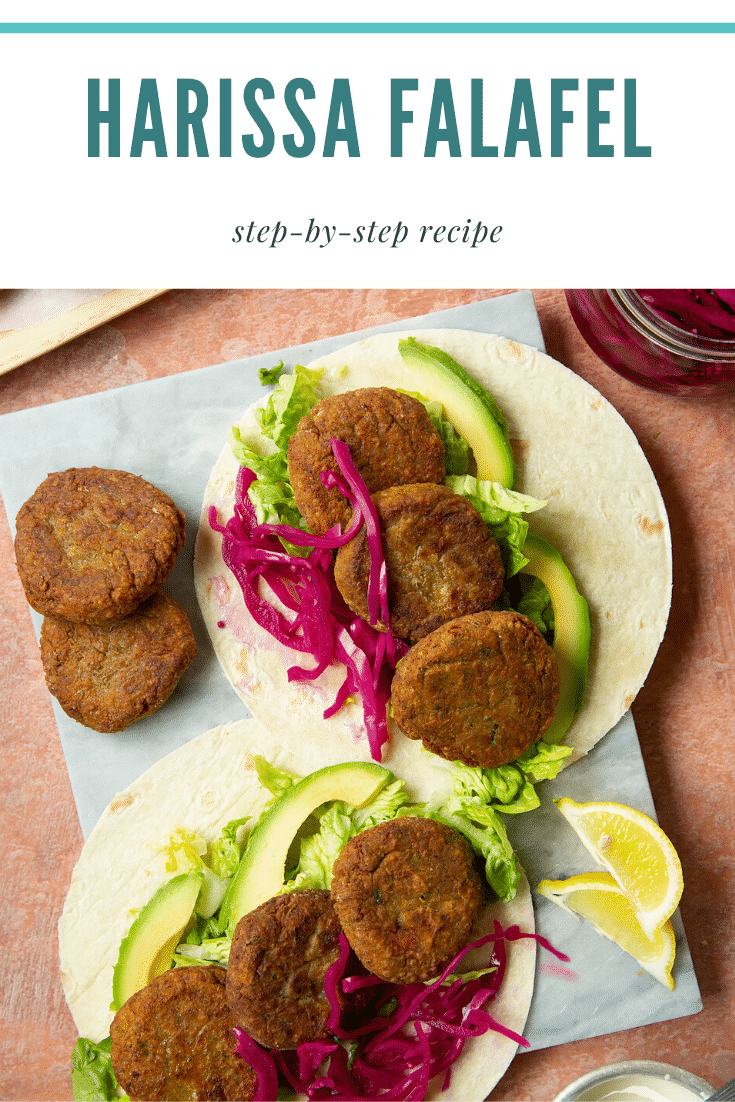
Can I bake these harissa falafel?
While you can certainly bake them to reheat the falafel, but I haven’t tried baking them from the get-go.
If you would like to give it a try I would recommend putting them on a baking tray and spraying/drizzling with a little oil before putting them in a 180C oven until piping hot. Let me know in the comments if you do give it a try!
Why did my harissa falafel turn out burned or overcooked?
This is usually the result of having your pan too hot, especially if they are burnt on the outside and still rather cool on the inside.
Turn down your heat source and keep a careful eye on their colour while they cook.
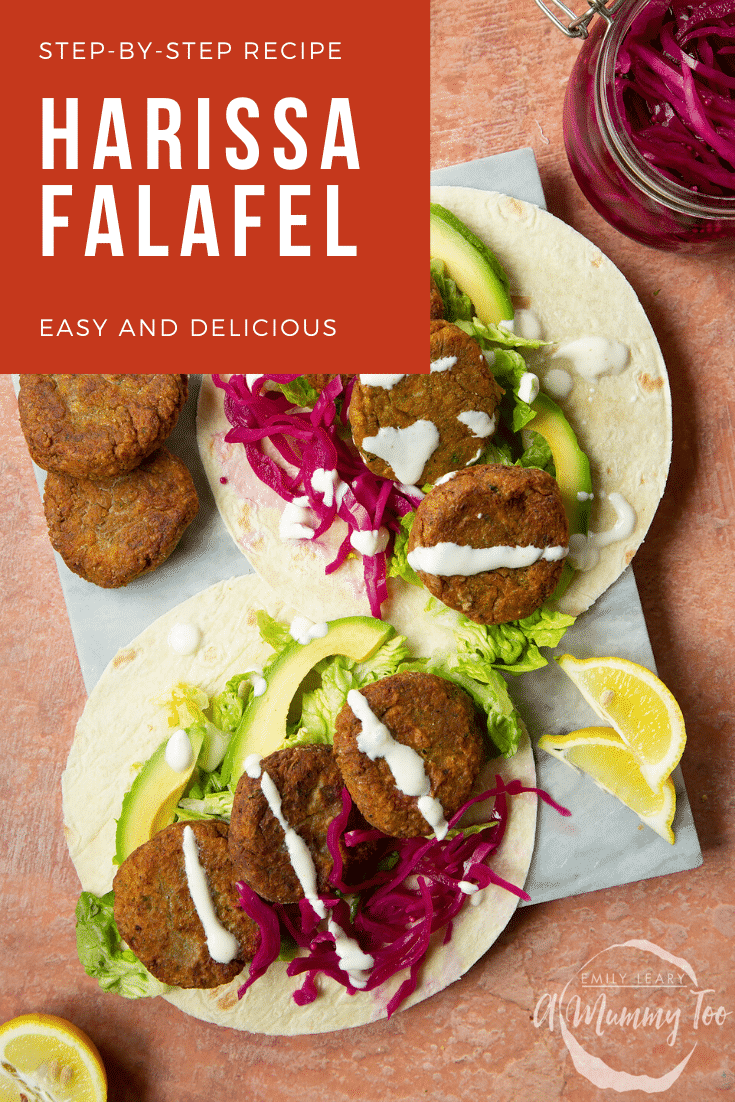
What is the origin of falafel?
There are a few competing theories on the origin of falafel, but it’s safe to say it’s a very, very old dish.
It’s possible falafel appeared in Egypt around 1000 years ago, although it may go back all the way to Ancient Egypt where fava beans were originally used. Other theories are that it came from around the Arabian Peninsula and Yemen, but no one is entirely sure.
One this is for sure though. They’re delicious!
Print this harissa falafel recipe
Harissa falafel
Ingredients
For the quick-pickled cabbage
- 125 ml (4.2 floz) apple cider vinegar
- 1 tbsp caster sugar
- 1 tsp salt
- 1 tsp yellow mustard seeds
- 1/2 black peppercorns
- 1 shallot thinly sliced
- 200 g (7.1 oz) red cabbage thickly sliced
For the falafel
- 50 g (1.8 oz) quinoa dry weight
- 240 g (8.5 oz) tinned chickpeas drained
- 1 tbsp harissa paste
- 2 garlic cloves roughly chopped
- 1/2 tsp ground coriander
- 1/2 tsp ground cumin
- 1 1/2 tbsp plain flour plus extra for coating
- 1/2 tsp baking powder
- 1 small onion roughly chopped
- 1 handful flat-leaf parsley stems removed
- 1 handful fresh coriander stems removed
- 5 tbsp vegetable oil for frying
- pinch salt and pepper to season
For the tahini dressing
- 2 tbsp tahini
- 2 tsp lemon juice
- 1/2 tsp white wine vinegar
For the wraps
- 4 soft tortilla wraps
- 2 baby gem lettuces washed and chopped
- 1 avocado halved, stoned, peeled and sliced
Equipment
-
Preserving jar
-
Small plate
Instructions
Make the quick-pickled cabbage
-
First, make the pickling liquor for the cabbage. Combine the apple cider vinegar, sugar, salt, mustard seeds and peppercorns in a small saucepan.
-
Add 125ml water and bring to the boil. Remove from the heat as soon as it boils.
-
Put the shallots and cabbage into a clean, heatproof jar.
-
Pour the hot pickling liquor over it and press the cabbage down to ensure it’s all submerged. Leave it to cool, then seal with a lid and refrigerate it for at least a few hours, ideally overnight.
Make the falafel
-
Cook the quinoa in a large pan of boiling water for 10 minutes or until the quinoa is tender. Drain and allow it to cool.
-
Put the chickpeas, onion, garlic, cumin, coriander, baking powder, flour, harissa, fresh parsley and fresh coriander in a food processor.
-
Blitz until smooth, adding a tablespoon of warm water if it is dry and crumbly. Keep adding warm water, a tablespoon at a time, blitzing between additions, until you have a paste that will hold together (you may need up to 6 tablespoons). (Editor’s note: I didn’t need to add any water at all.)
-
Transfer the mixture to a bowl, then add in the quinoa. Stir in.
-
Season to taste with salt and pepper. Chill in the fridge for at least 1 hour.
-
Using clean hands, take egg-sized lumps of the falafel mixture into your hands and shape them into patties (the mixture should make around twelve).
-
Press them together, then roll them gently in flour – they will be fragile, so handle them with care.
-
Heat the vegetable oil in a heavy-based frying pan over a medium-high heat, then fry the falafels, carefully flipping them over halfway through cooking, until they are golden brown on both sides.
-
Transfer to a plate lined with kitchen paper to soak up any excess oil.
Make the tahini dressing
-
Combine all the ingredients with 3 tablespoons of warm water in a small bowl and whisk until smooth. Season to taste.
Assemble the wraps
-
Spread a generous spoonful of the tahini dressing on each wrap, then divide the lettuce, avocado and falafels between them.
-
Add some pickled cabbage to each, then drizzle over a little extra tahini dressing. Wrap them up tightly and serve immediately.
Video
Notes
Nutrition
* Note: nutritional information is estimated, based on publicly available data. Nutrient values may vary from those published. Cuisines identify the primary region of inspiration for a dish.
Pin this harissa falafel wrap recipe for later
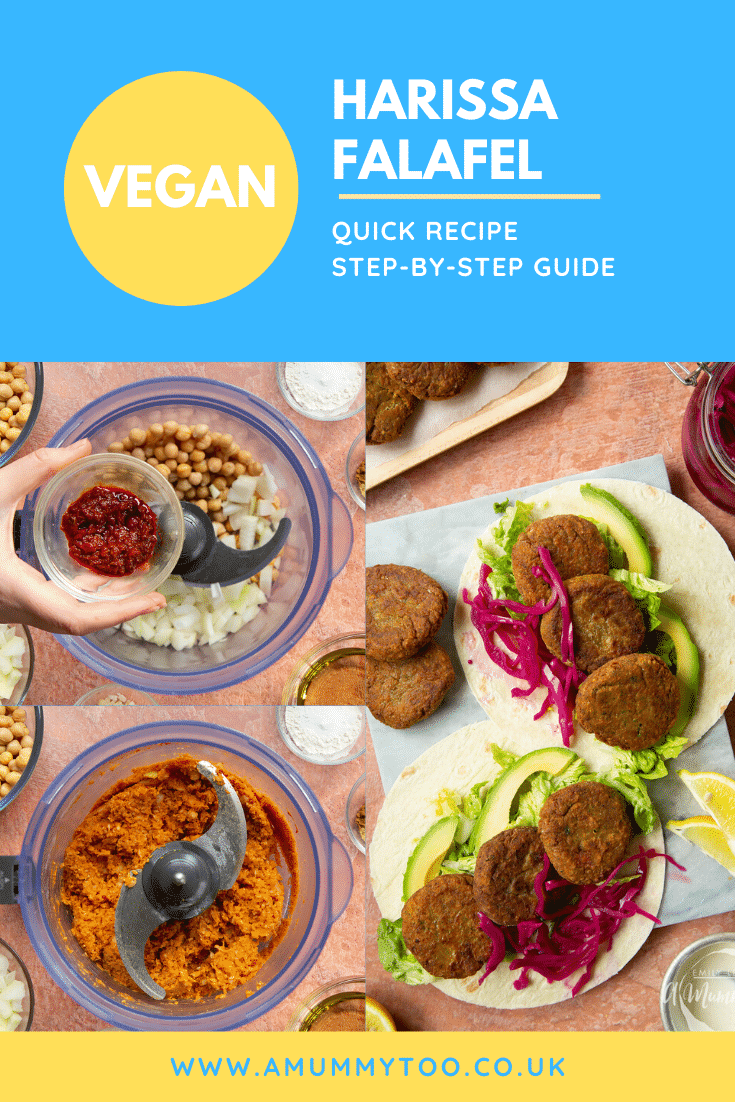
More vegetarian recipes to try
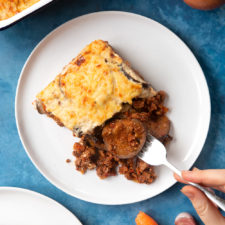
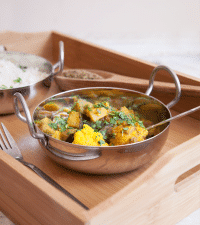
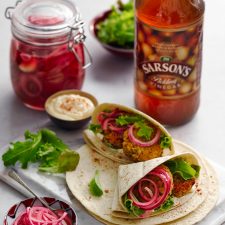
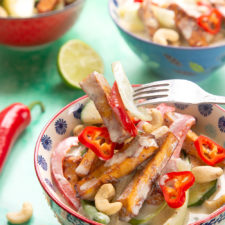
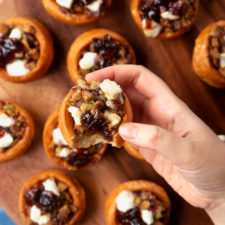
Get Your Kids to Eat Anything
My debut cookbook, Get Your Kids To Eat Anything is available now from all good bookshops!
It’s so much more than a cookbook, it’s a 5-Phase programme designed to take you through a meaningful, simple and sustainable journey to end fussy eating.

Since its release in March 2019 Get Your Kids To Eat Anything has been changing mealtimes in households across the country and has become an Amazon #1 best-seller.


